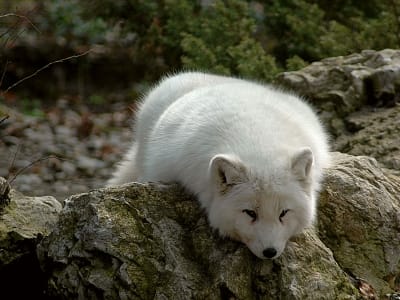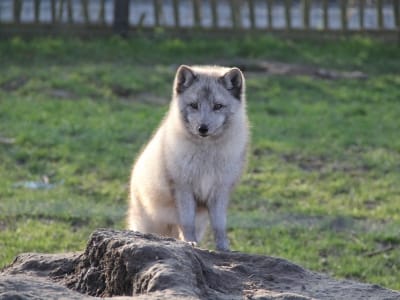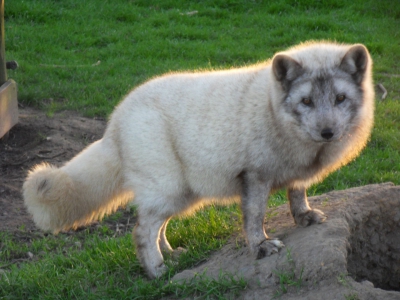Arctic fox Vulpes lagopus
Animals in our sanctuary
Endur

Arctic fox Endur was confiscated along with another Arctic fox, porcupines, servals, kudu, ibis and raptors in February 2024 in Houyet, Belgium. The polar foxes were used as a breeding pair, probably for animal trade. The confiscation was carried out by Dierenwelzijn Wallonia where the animals were then housed at Natuurhulpcentrum.
Where does he feel most at home?
The arctic fox lives on the entire arctic tundra of North America, Northern Europe and North Asia.
What's his favourite food?
They like small mammals, especially lemmings and other voles. They will also eat snow hares, birds, eggs, insects, berries and fruits.
Fun fact
The number of arctic foxes seems to depend on the number of lemmings present.
They can survive temperatures of -50 °C.






